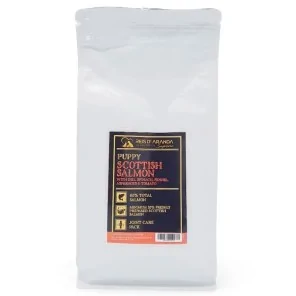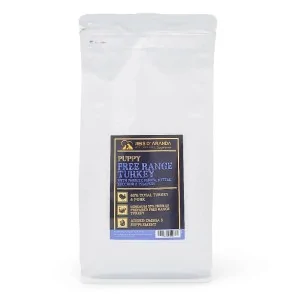The Tornjak originated from genetically homogeneous, almost extinct, indigenous shepherd dogs. These dogs have...
THE BELGIAN SHEPHERD TERVUEREN
INTRODUCTION
Looking for an energetic, intelligent and loyal dog breed? If so, the Belgian Tervueren Shepherd is a great breed to consider. These beautiful, majestic dogs are known for their energetic nature and loving companionship.
THE ORIGIN OF THE BELGIAN TERVUEREN SHEPHERD DOG
As the name makes clear, this is a breed of dog from Belgium. Tervueren is a Belgian town. But its origin is not clear. Some place it in the Middle Ages, while other hypotheses fix it later and speak of the 19th century. In its beginnings it was a herding dog.
Nowadays, however, it is more commonly kept as a companion dog, in security or assistance roles. They are closely related to the Groenendael dogs, It seems proven that the Belgian Shepherd Tervueren descended from them. In fact, litters of this breed may occasionally result in Belgian Shepherd Tervueren puppies.
At the end of World War II this breed was considered on the verge of extinction. Fortunately, its popularity has increased decades ago, mainly due to the new roles it has taken on. The best known is drug detection. Many dogs work at the borders stopping smuggling.
STANDARD OF THE BELGIAN TERVUEREN SHEPHERD DOG
GENERAL APPEARANCE: The Belgian Shepherd Dog is mediolinear, harmoniously proportioned, at the same time elegant and powerful, of medium size and lean, strong musculature. His body is square in shape. It is rustic, accustomed to life in the open air, and its constitution allows it to resist the atmospheric variations so frequent in the Belgian climate. By the harmony of its forms and the haughty bearing of the head, the Belgian Shepherd Dog should denote that elegant robustness which has become the attribute of selected representatives of a working breed. The Belgian Shepherd Dog will be judged at rest in its natural positions, without physical contact with the presenter.
IMPORTANT PROPORTIONS: His body forms a square. The chest slopes down to the level of the elbows. The length of the muzzle is equal to or slightly more than half the length of the head.
HEAD : Well moulded, lean and long, but not excessively so. The length of the skull and muzzle are almost equal; at most the muzzle is a little longer, which gives a touch of finish to the whole. Skull of medium width, in proportion to the length of the head. The forehead is flat rather than rounded and the midline is not very pronounced. Seen in profile, the skull is parallel to the imaginary line extending the muzzle.
NOSE: Black in colour. The nostrils are wide open.
EYES: Medium sized, neither prominent nor sunken. They are slightly almond-shaped and brownish in colour, preferably dark and the rims of the eyelids are black. The gaze is direct, alert, alert and inquisitive.
EARS: Of distinctly triangular appearance. Stiff and erect, set on high and of proportionate length. The pinna is well rounded at the base.
BITE / TEETH: The jaws show strong, white teeth; they are strongly and evenly set in well developed jaws. The articulation is scissor-like, i.e. the incisors of the upper jaw should slide over the incisors of the lower jaw, slightly overlapping but not touching them. The overlapping of the incisors is acceptable, as it is this type of ‘pincer’ teeth which is preferred by sheep and cattle drivers.
NECK: Slightly elongated, splayed, muscular, without dewlap. It widens progressively in the region of the shoulders.
BODY: Vigorous, but without a heavy appearance. In males, its length measured from the point of the shoulder to the point of the buttock is approximately equal to the height at the withers. In bitches this length may be somewhat greater.
FOREQUARTERS: Solid bone structure, fine and strong musculature. The shoulder blades are long, oblique and flattened. Together with the humerus they form an angle which allows easy movement of the elbows. Upper arm should move in the direction directly parallel to the longitudinal axis of the body. The forearms are long and well muscled. Pasterns strong and short, lean, without signs of rickets.
HINDQUARTERS: Strong, but without signs of heaviness. They move in the same plane as the forelegs. The hindquarters are perpendicular to the ground. The thighs are broad and very muscular. The knee is approximately perpendicular to the haunch. The legs are long, broad, muscular and angulated in the region of the hock, but not too much. The hocks are close to the ground, broad and muscular. Seen from behind, they are perfectly parallel. Metatarsus solid and short.
FEET: Slightly oval; toes curved and close together. The pads are thick and elastic. The nails are dark and strong.
TAIL: Well set on. Strong at root, of medium length. At rest, the dog keeps it hanging down with the tip slightly bent backwards. When the dog is in action, the tail is raised, accentuating the curve of the tip, but at no time should it deviate, nor take the shape of a hook.
GAIT / MOVEMENT : Loose, agile and covering as much ground as possible. The Belgian Shepherd Dog seems tireless, as he is always on the move. Due to his petulant temperament, he has a marked tendency to move more in circles than in a straight line.
HAIR: As the length, direction and appearance of the coat are varied, this point has been adopted as a criterion to distinguish the different varieties of the breed. In all varieties the coat should always be abundant, close, of good texture, forming together with the undercoat, which is woolly, an excellent protective coat.
PATTERN AND COLOUR:
MASK: In the Tervuerens and Malinois, the mask should be well pronounced and tend to cover in a single black area, both the upper and lower lip, as well as the corner of the lips and the eyelids. A strict minimum of six points of pigmentation has been defined: the two ears, the two upper eyelids and the upper and lower lip.
CHARCOALING: In both Tervuerens and Malinois, charcoaling means that some hairs have a black tip, which darkens the base colour. This black colour must in any case be ‘flaming’ and may not appear in large patches or in the form of stripes.
COLOUR OF TERVUEREN: Only charcoal red and charcoal grey under a black mask. However, the preferred colour is charcoal red. It should be deep, not light or faded. Any dog whose colour is other than charcoal red or does not correspond to the desired intensity cannot be considered as an elite specimen.
SIZE: 62 cm for males and 55 cm for bitches. Tolerance is 2 cm less and 4 cm more.
THE HEALTH OF THE BELGIAN SHEPHERD TERVUEREN
Like all Belgian Shepherds, the Tervueren is an active dog that requires plenty of mental and physical exercise every day, otherwise he can become destructive and direct his frustration and stress towards other animals or family members; he should be brushed every week with an extra long barbed card and bathed every month and a half to two months (especially during moulting season). In terms of nutrition, these dogs require essential fatty oils for a healthy coat and skin, so fish-based products are a good choice, as well as high quality proteins such as Angus beef-based feeds.
The most common diseases in this breed are:
- HIP DISPLASIA: This is a very common disease in German Shepherds. It is characterised by inflammation and pain in the joint between the hip and the femur of the dog. It is a congenital hereditary disease.
- ELBOW DYSPLASIA: Canine elbow dysplasia is a disease consisting of multiple abnormalities of the elbow joint. The elbow joint is a complex joint made up of three bones (the radius, ulna and humerus). If these three bones do not fit together perfectly as a result of growth disturbances, an abnormal distribution of weight on different areas of the joint occurs, which causes pain, lameness and leads to the development of arthritis. Elbow dysplasia is a disease comprising several disorders grouped into medial space disease (fragmentation of the coronoid process, osteochondrosis, elbow incongruity and elbow anomalies) and nonunion of the anconeal process. The cause of canine elbow dysplasia is unclear. There are several theories as to the exact cause of the disease, including genetics', cartilage growth defects, trauma, diet and other issues. The most common suspicion is that it is a multifactorial disease causing growth disturbances.
- CATARACTS: Cataracts in dogs are a loss of transparency of the lens that helps them to see better, i.e. loss of the crystalline lens. Due to the breakage of the crystalline tissue, opacity is produced in the eyes and causes blurred vision. It is essential to treat them as soon as possible because the more time passes, the more dense they become and the more likely it is that the canines will have a total loss of vision without the ability to recover it. There are several causes of cataract disease in dogs. One of them can be by nature or by the dog's old age, as we have already mentioned above, due to the rupture of the crystalline lens. But there are also other causes of cataracts in dogs, such as trauma, injury, inflammation of the eye or diabetes. However, the most common cause, or the one most commonly diagnosed, is hereditary cataracts. Age is not a determining factor in this cause as they can appear when the animal is young.
- CORNEAL DISTROPHY: Corneal dystrophy is an inherited genetic disease affecting the cornea, the transparent circular wall at the front of the eye. It usually affects the central part of the cornea in both eyes without causing eye inflammation and progresses slowly.
- GLAUCOMA: This hereditary disease is detected at 2 to 3 years of age. The German Shepherd has pain in his eye and rubs it with his paw or against a surface. The intraocular pressure increases and causes the pain. A dilated, opaque pupil is a clear symptom of the disease.
WHAT IS THE BELGIAN SHEPHERD TERVUEREN LIKE AS A PET?
They are very active and highly intelligent dogs that require work to keep them busy. Such activities can range from obedience, agility, flyball, guarding and protection, bomb and drug detection, to sports such as Schutzhund and finally to search and rescue of people and victims in disasters and avalanches. Police dogs par excellence, they can carry out practically any activity.
As companion animals, they are loyal and form very strong bonds with their family, which makes them seek to defend their loved ones from strangers and dangers at all costs. They are very observant dogs and attentive to any change in their environment, which makes them excellent watchdogs. Some dogs can be nervous, this will depend on breeding, genetics and the type of experiences to which they have been subjected at an early age, so it is very important to give them from puppyhood a proper socialisation and expose them to as many stimuli, everyday situations and people as possible. It is necessary to train and exercise them constantly and not expect the animal to magically become a well-behaved dog.
The Tervueren, like other Belgian Shepherds, is not recommended as a first dog, due to the possible lack of knowledge or inexperience of the owners in handling this very active dog.
CONCLUSION
The Tervueren is a loving and faithful companion who will protect your home and family. As with all breeds with a protective tendency, it is not advisable to encourage his protective instincts when young, as he may begin to protect you in inappropriate situations. His natural protective instincts will come out if and when necessary. However, he has a great sense of humour and is a very quick learner.
Leave a comment
Log in to post comments
















